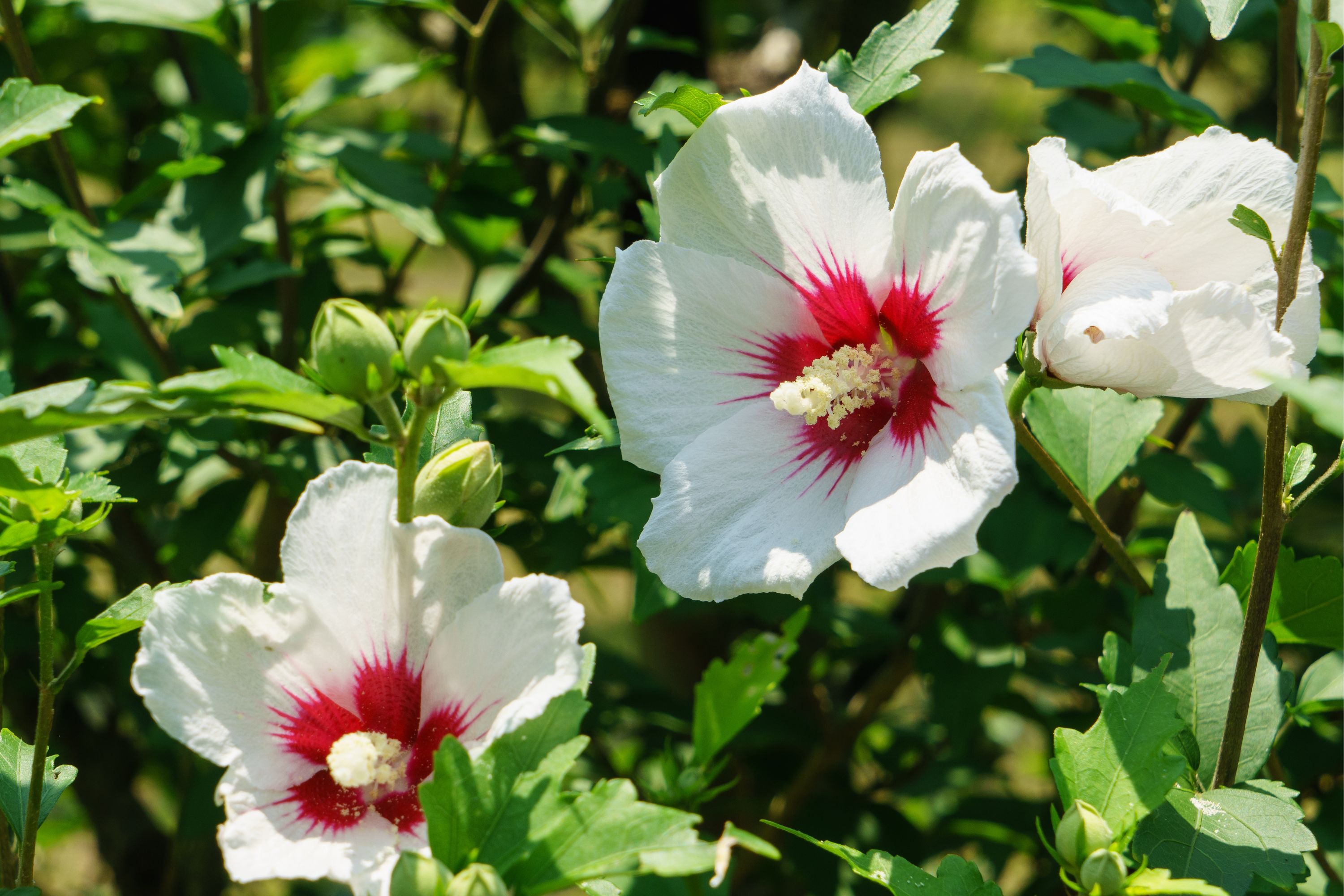Rose of Sharon
(Hibiscus syriacus)

Description
Hibiscus syriacus, commonly known as Rose of Sharon or Syrian hibiscus, is a deciduous shrub that belongs to the mallow family (Malvaceae). This plant is native to East Asia, including China and Korea, but has been introduced to many other parts of the world as an ornamental plant. It is highly valued for its attractive flowers, which can bloom from mid-summer until autumn. Description Hibiscus syriacus typically grows to a height of 8 to 12 feet (2.4 to 3.7 m) and a spread of 6 to 10 feet (1.8 to 3.0 m). The plant has a dense, bushy habit with a rounded shape, and its leaves are green, glossy, and somewhat lobed. The flowers are large, showy, and trumpet-shaped, measuring 3 to 4 inches (7.6 to 10.2 cm) in diameter. They come in a range of colors, including white, pink, red, blue, and purple, and may have a dark center or eye. The flowers of Hibiscus syriacus are often used in herbal tea blends and other medicinal preparations. Growing Conditions Hibiscus syriacus is a hardy plant that can grow in a wide range of conditions. It prefers full sun and well-drained soil, but can tolerate some shade and a variety of soil types, including sand, clay, and loam. The plant is also drought-tolerant once established and can withstand high temperatures and humidity. Propagation Hibiscus syriacus can be propagated from seeds, cuttings, or layering. Seeds can be collected from the dried fruit capsules after they have matured and turned brown. To propagate from cuttings, take a 4 to 6 inch (10 to 15 cm) long stem cutting from the plant in early spring or late summer. Dip the cutting in rooting hormone and plant it in well-draining soil. Keep the soil moist and provide the cutting with bright, indirect light until it has rooted and begun to grow. To propagate from layering, bend a low-hanging stem down to the ground and cover it with soil. After a few weeks, the stem should begin to root and produce new growth. Pruning Hibiscus syriacus benefits from regular pruning to maintain its shape and promote healthy growth. The best time to prune is in late winter or early spring before new growth appears. Prune out any dead or damaged wood, and remove any branches that are crossing or rubbing against each other. To promote a bushier plant, pinch back the tips of the branches in early spring. Pests and Diseases Hibiscus syriacus is generally a healthy plant that is not prone to many pests or diseases. However, it can be susceptible to aphids, spider mites, and whiteflies, particularly in hot, dry weather. These pests can be controlled with insecticidal soap or horticultural oil. The plant may also be affected by fungal diseases such as leaf spot, powdery mildew, and rust. These can be prevented or treated with fungicides, proper pruning, and good cultural practices such as avoiding overhead watering. Uses Hibiscus syriacus is primarily grown as an ornamental plant for its attractive flowers and foliage. It can be used as a specimen plant, in mixed borders, or as a hedge or screen. The plant is also valued for its medicinal properties. The flowers, leaves, and roots of Hibiscus syriacus are used in traditional Chinese medicine to treat a variety of ailments, including fever, colds, inflammation, and digestive disorders.
Taxonomic tree:







